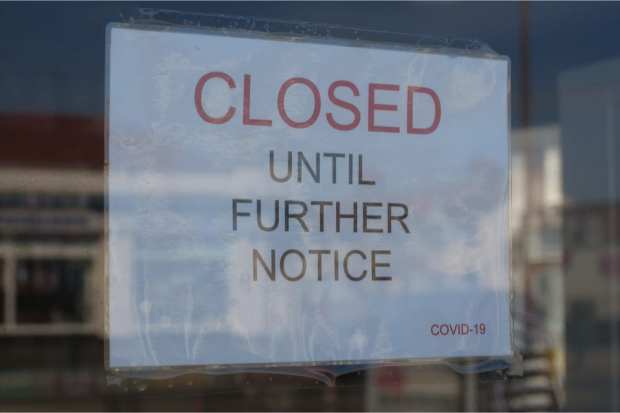ADP Job Loss Data Spotlights SMB Impact — With More To Come

The latest jobs data show bad news … more than likely to get much, much worse.
Last month, unemployment claims spiked in a single week by 3.3 million.
The latest numbers underscore the fact that in the wake of the coronavirus pandemic, in the wake of government mandates to shutter non-essential businesses, the jobless rolls are going to swell exponentially, and it is small and medium-sized businesses (SMBs) that will feel the brunt of the pain.
Reports came Wednesday (April 1) that U.S. private payrolls sank in March for the first time in more than two years, as estimated by ADP and Moody’s Analytics. The March data barely begin to capture the decimation of jobs across the U.S. landscape: ADP’s National Employment Report showed that payrolls were off by 27,000 positions, a stark contrast to the 183,000 positions gained in February.
Reuters noted that while economists had expected a drop by of about 150,000 positions, the data had been gathered in mid-March before “lockdowns” and stay-at-home orders had become commonplace amid the COVID-19 outbreak. The report covers employment activity up until March 12.
Mark Zandi, chief economist at Moody’s, quoted by CNBC, said total job losses might range between 10 million to 15 million.
“It’s been 10 straight years of consistent, solid job growth, and the virus has put an end to that,” he said on a call Wednesday, according to CNBC. Only 6 percent of companies said they were hiring, a worse showing than had been seen during the financial crisis and where typically, as many as 40 percent of firms had said they were hiring.
Drilling Down into the Data
Drilling down into the ADP data, as total U.S. nonfarm private employment slipped by that headline number of 27,000, there were puts and takes. Larger firms, with employee counts of more than 500, added 56,000 positions. Medium-sized firms added 7,000 positions.
Smaller companies, with up to 50 employees, lost 90,000 jobs. And by sector, trade, transportation and utility firms lost 37,000 workers. Leisure and hospitality businesses, perhaps not surprisingly, lost 11,000 positions.
The hardest of the hardest hit? Small businesses that have fewer than 20 employees, which lost a total of 66,000 positions.
The ADP data dovetail with our own findings at PYMNTS that 2020 is shaping up to be a landmark year for SMBs — and not for the reasons anyone would have desired or expected. As we noted, in a survey of more than 200 SMB owners, coming into the year, more than 66 percent had expected to see 2020’s top line growth outpace that of 2019, against a backdrop of low unemployment and high consumer confidence, which of course translates into robust consumer spending.
The picture has darkened, to put it mildly. As part of our continuing efforts to take the pulse of Main Street U.S.A., the three weeks that ended on March 27 forced us all into a new reality of grappling with a pandemic.
Overall, the firms we surveyed show the same profiles as those monitored by ADP. A bit more than half employ between 11 to 100 people, and one third employ up to 10 individuals. Roughly half of those firms log sales of up to $1 million annually, and are concentrated in retail, focused on selling clothes, accessories and gifts or groceries. Others are in the service industry, such as nail salons.
The responses have been sobering.
As many as 5 percent of SMBs we surveyed have shuttered — permanently.
Beyond that statistic, nine out of every 10 of those surveyed have seen revenue declines, and more than half of our roster have seen “significant” declines. It stands to reason that the revenue declines will be much greater the next time we ask — because at the time of our March 24 survey, only 29 percent of SMBs had closed their doors temporarily. That number is likely to skew higher as the coronavirus pandemic continues.
Uncertainty remains the prevailing mindset. More than a quarter (26 percent) of SMBs surveyed doubt they’ll survive the COVID-19 pandemic. A third (33 percent) aren’t sure they will. Roughly 76 percent said they do not have enough cash to last 25 days, though a majority, at 72 percent, said they have “ready access” to cash through traditional banking relationships or through other means.
The data points, regardless of where you look, whether they be from the government or from PYMNTS, all point to one trend for SMBs, the backbone of our economy — troubling times ahead.
